Last updated on November 11th, 2025 at 09:54 am
Ross over at 2 minute tabletop creates amazing battle maps and buildings at very reasonable prices, or alternatively you can support him and receive the maps via patreon. I love his art style and he has a huge collection of maps and buildings with several new ones added each month. I’ll talk about the maps in another post, but today I’m going to focus on the buildings and how I turn them into something ready for the table.
Each building set contains a number of floors which can be stacked on top of each other and removed as the adventurers explore each floor. As well as a full colour version Ross includes line art and black and white versions, important for me as I only have a black and white printer. However that allows me to create a classic D&D old school style which I think works really well with my theme of low technology gaming (no computers, phones or apps allowed at the table, including the DM). Think illustrations in 1st edition AD&D and you get the idea.
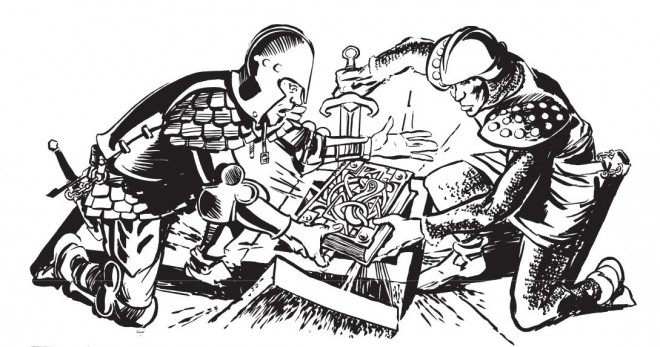
To create building ’tiles’ that will look great on the table I’ve followed Dining Table Print & Play‘s excellent tutorial on making playing cards. He uses linen paper and spray lacquer to get a playing card finish. I highly recommend his channel and this video in particular if you have any interest in creating your own maps and props as well as print and play gaming.
Some assembly required
The first step was to print the buildings out on linen paper (available at Amazon). The paper works great with a laser printer, and should look good on a ink jet too, especially in colour. Once everything is printed I roughly cut out the buildings leaving a good margin of 10mm or 1/2 inch.
To apply the spray lacquer (I used Krylon Colormaster Crystal Clear Gloss Spray Acrylic) make sure you’re in a well ventilated area and use scrap paper or a box to contain the spray. I use two coats, with 5 minutes between, then leave 15 minutes to dry.

After placing the paper on the backing board to work out where everything is going to go I apply spray adhesive to the back of the paper. Then press onto the board. The glue is super tacky so you have to get this right first time or it’ll be a nightmare to move. You can use a piece of kitchen roll so smooth down the paper, the lacquer stops the ink from smudging.
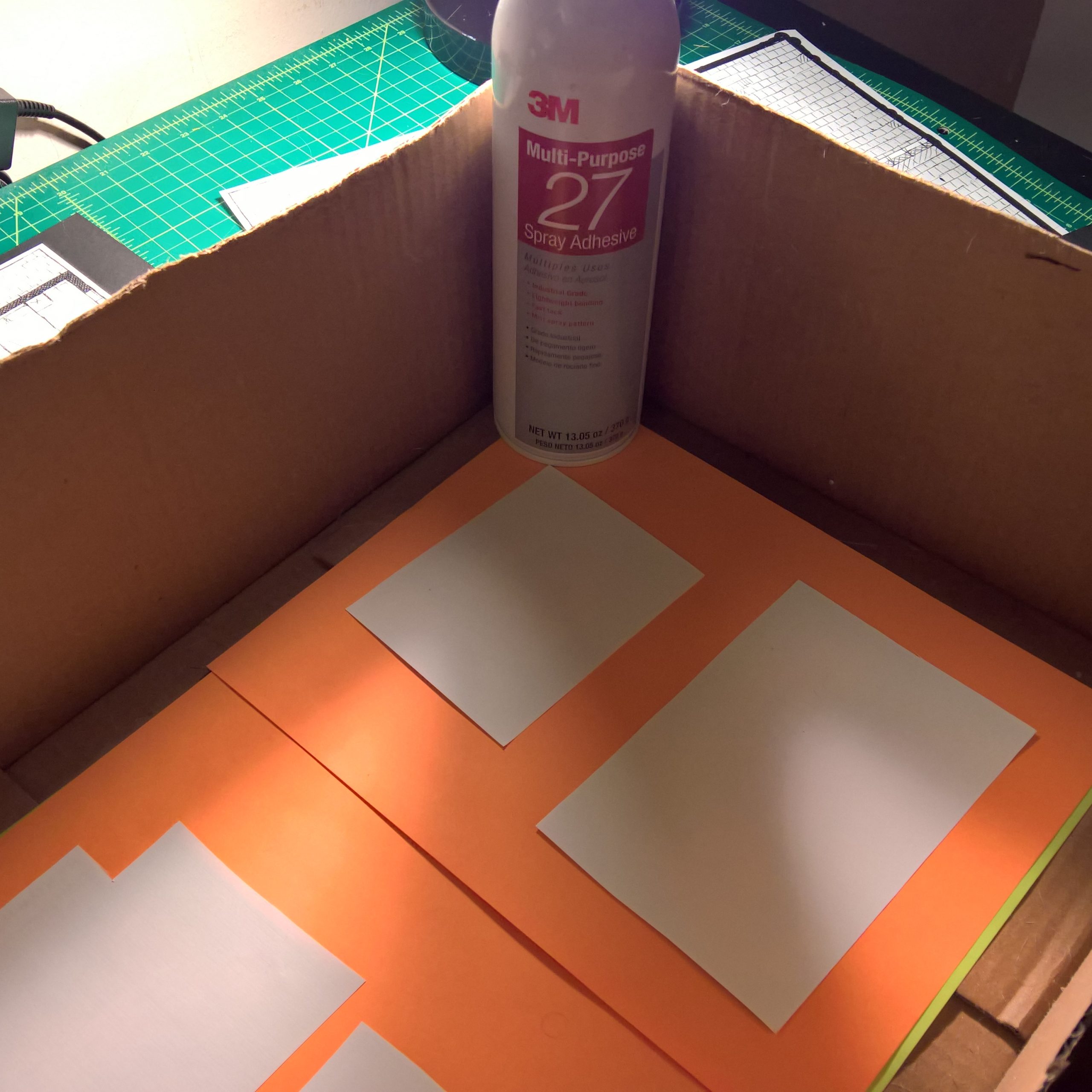
Now everything is stuck together you can start to cut out each section. I used the grid on the cutting mat to get nice 90 degree angles. Make the first cut, then line up that edge on the grid and place the ruler perpendicular to get a right angle cut. Rotate the board and repeat until you’re finished.
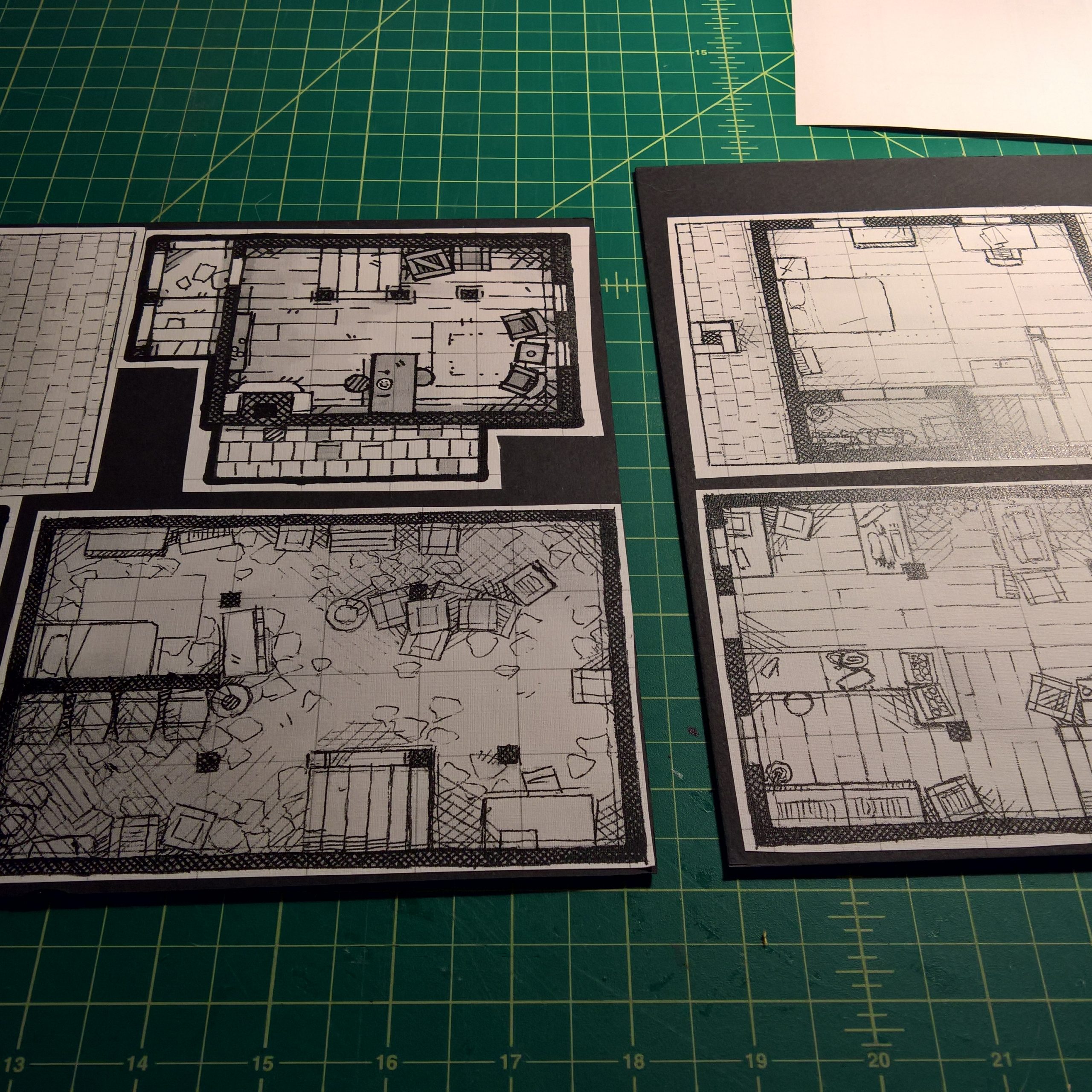
You might have white sections at the edges and will have a white line where the thickness of the paper shows though. Use a black pen, the bigger the better to cover up these bits. The camera makes the pen looks shiny and purple, but it looks ok in real life.

To get each floor the same size I use one floor to measure the other, lining it up then placing the ruler on top and making the cut.
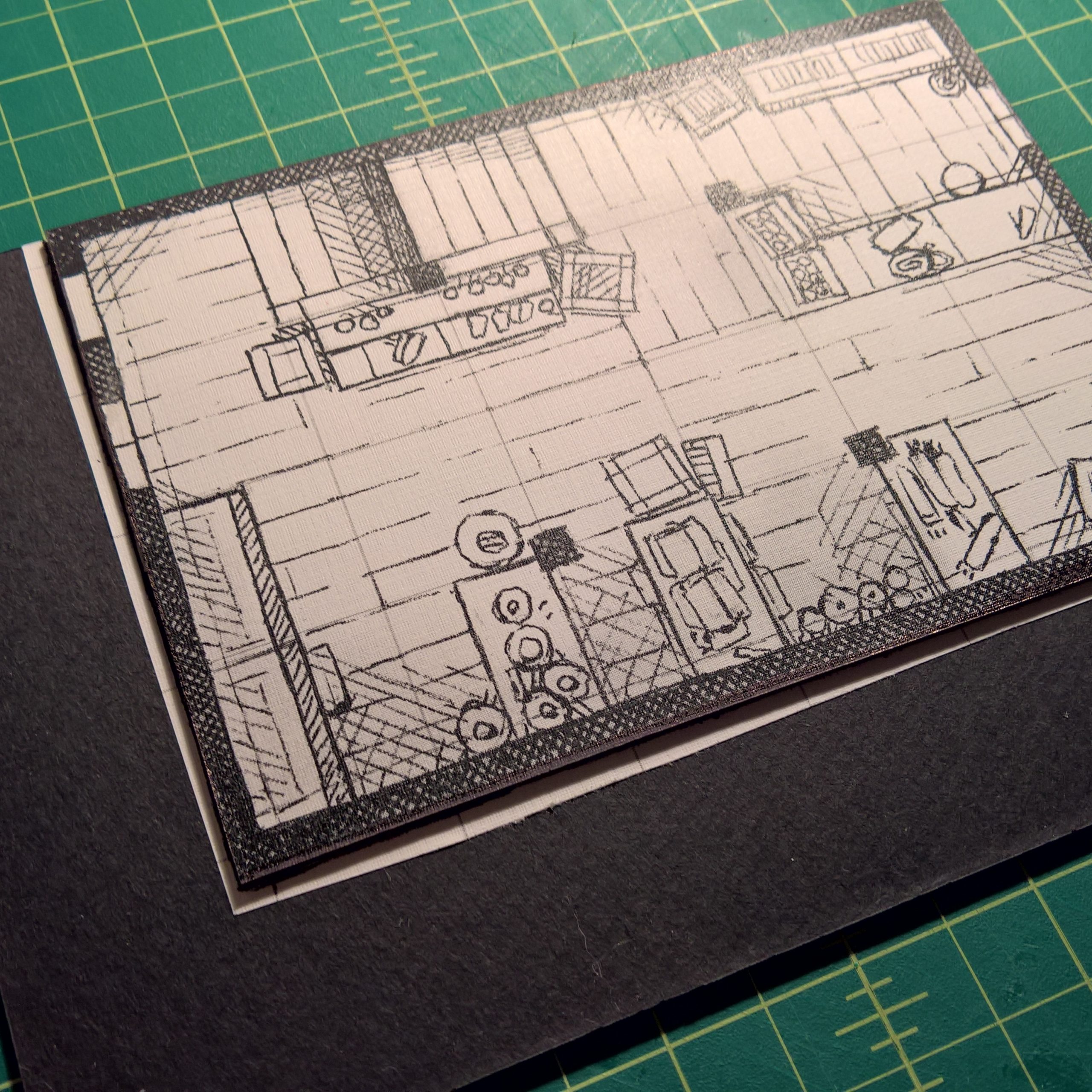
A finished building, with each floor exactly the same size. At this point you can add a final layer of lacquer to protect the print.
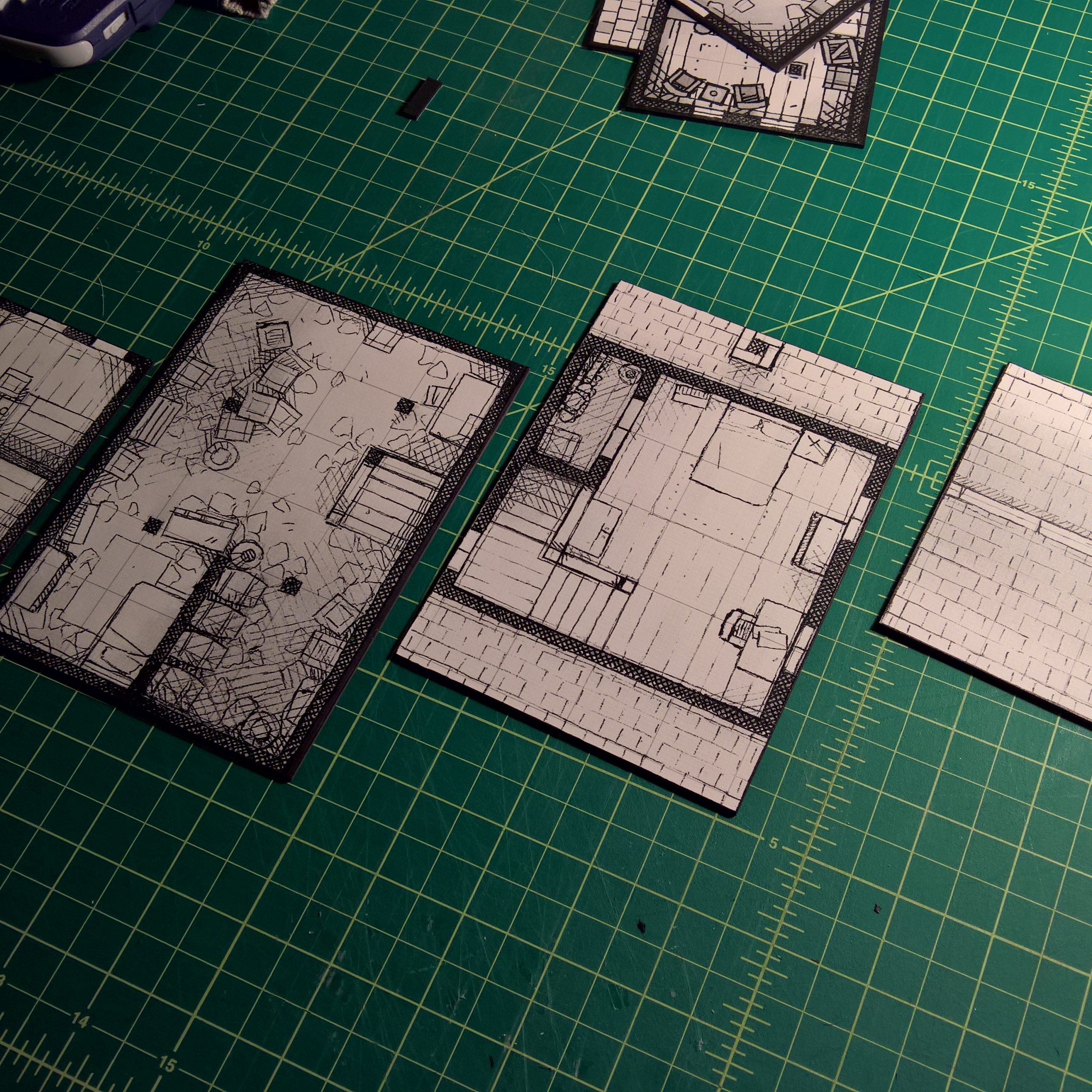
The final product on the table. The battle mat is also printed on linen paper then laminated to produce a wipe down surface, perfect for drawing spell effects with dry erase pens. The miniatures I made using the same process as the buildings except they are double sized and use thinner card. I found the images on google with search terms like “dwarf line art”, but I highly recommend Printable Heroes who is also on Patreon, they release line art versions of their designs, perfect for that old school look.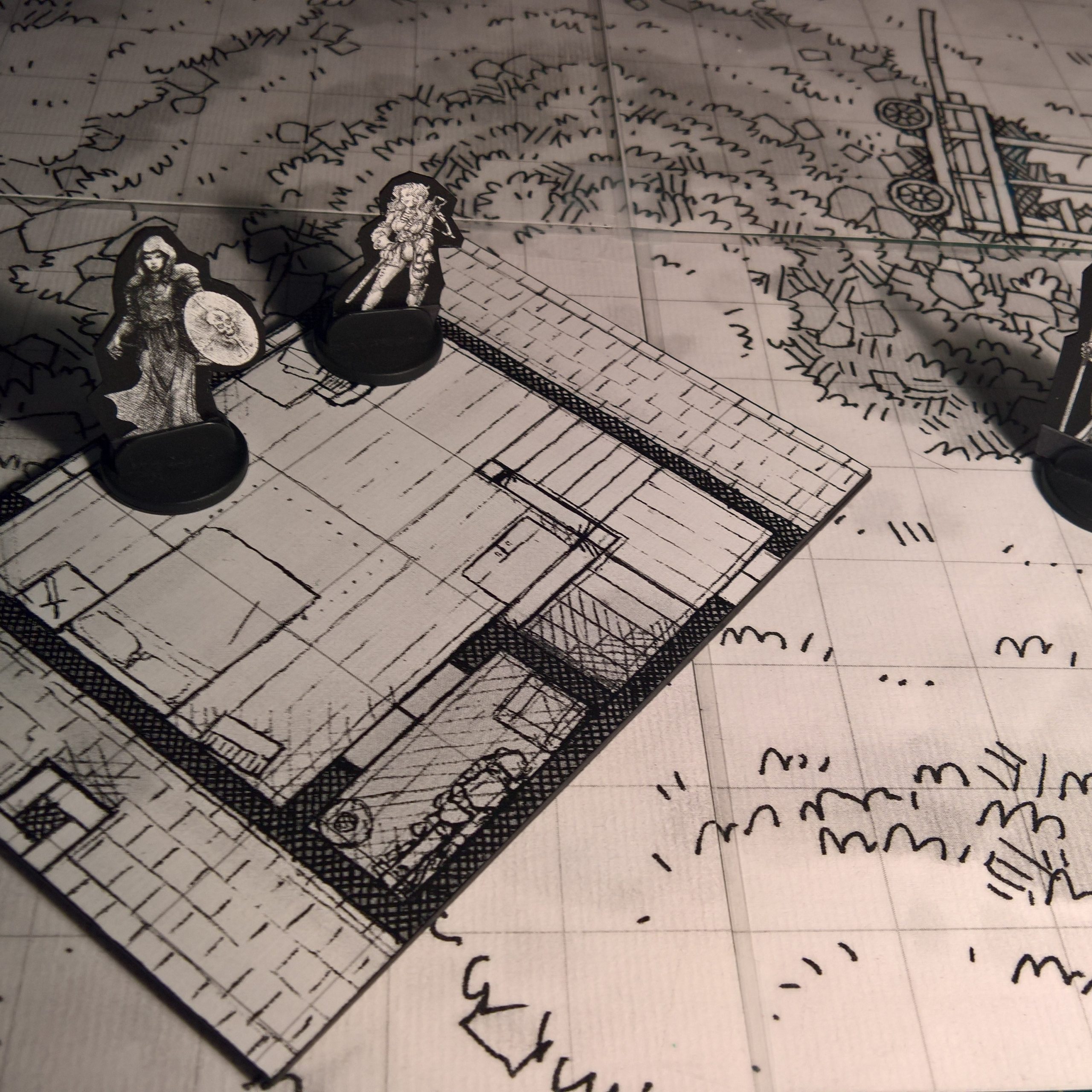
Pingback: Paul Kingtiger's Map Printing Method
Pingback: Paul Kingtiger's Map Printing Method